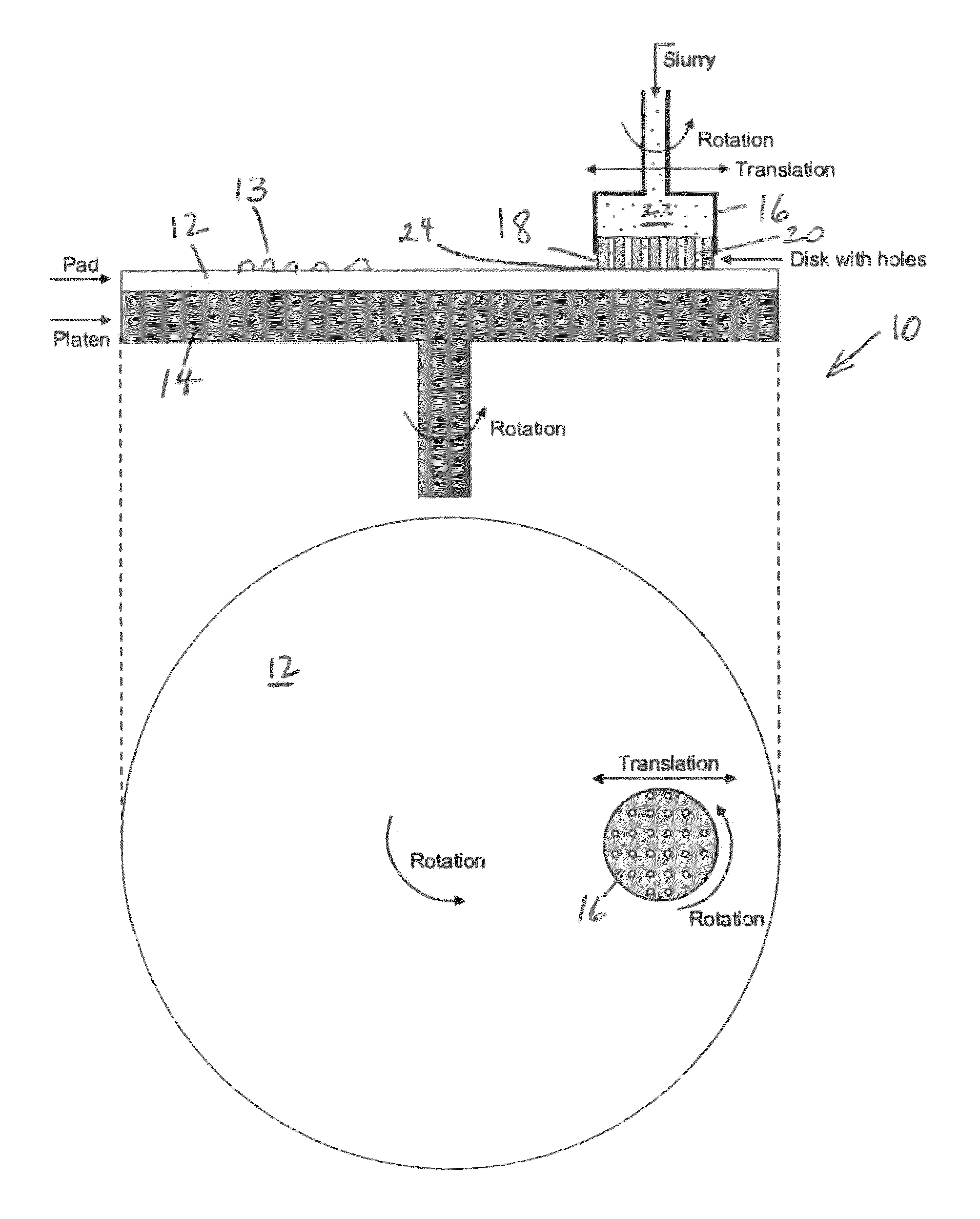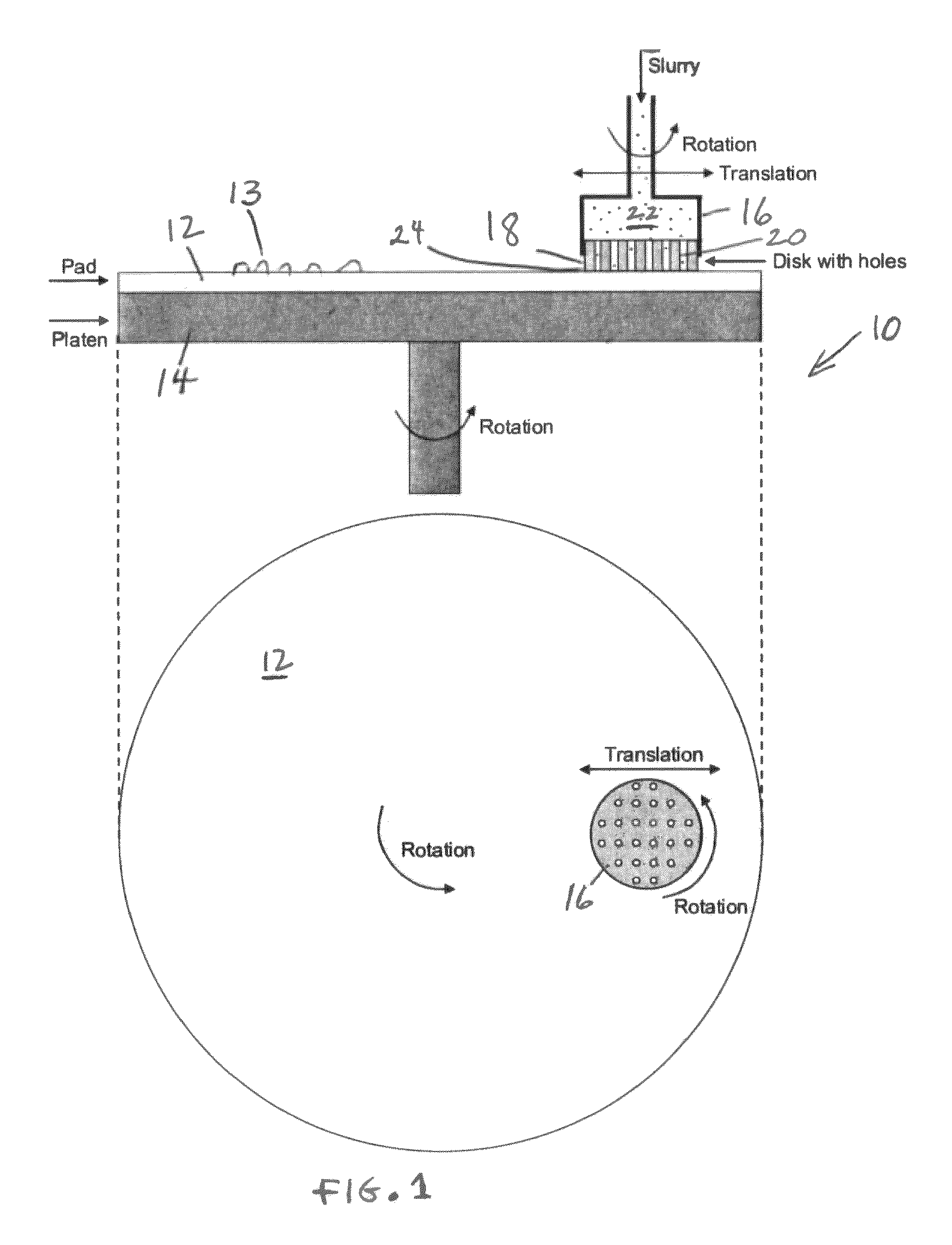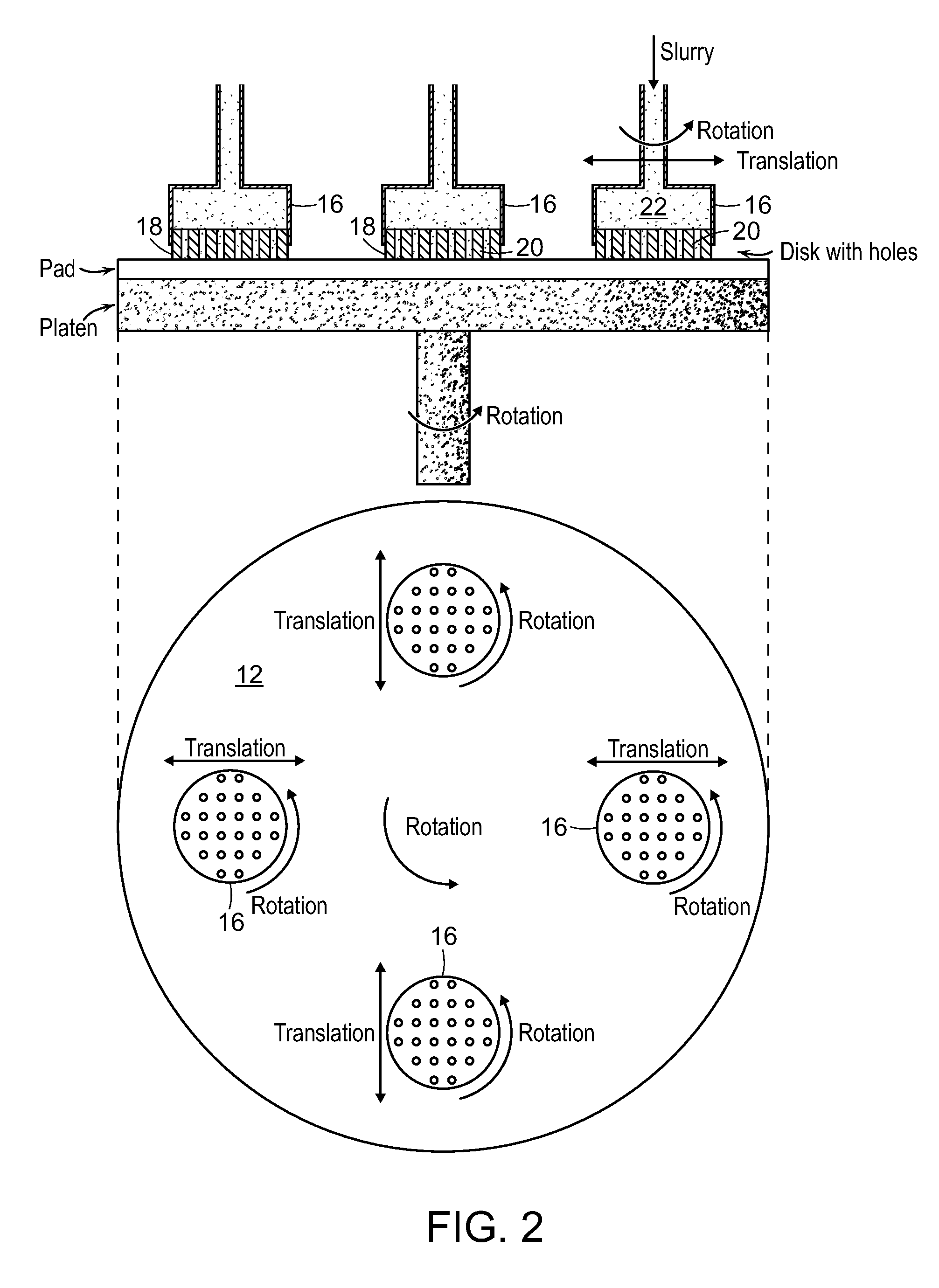Chemical-mechanical polishing pad conditioning system
a technology of conditioning system and polishing pad, which is applied in the field of chemical-mechanical polishing, can solve the problems of waste of consumables, and waste of valuable machine time, and achieve the effect of increasing the radius of curvature of asperities and cutting further the conditioning tim
- Summary
- Abstract
- Description
- Claims
- Application Information
AI Technical Summary
Benefits of technology
Problems solved by technology
Method used
Image
Examples
Embodiment Construction
[0012]The inventors herein have shown that the primary source of scratching is polishing pad asperities and not due to agglomerated slurry particles. Our research shows that scratching is primarily a function of the pad hardness, coefficient of friction and the radius of curvature of the pad asperities. When a pad is new, the radius of curvature of the asperities is small, on the order of 20 μm. We have determine that in order for pad scratching not to occur, the asperity radius of curvature needs to be increase beyond a certain threshold. A suitable range for asperity radius of curvature is 200-250 μm.
[0013]With respect to FIG. 1, a polishing pad conditioning system 10 includes a pad 12 to be conditioned. The pad 12 includes asperities 13 having a radius of curvature. The asperities 13 are exaggerated in the figure for clarity. Polishing pads 12 are often made of polyurethane. The pad 12 is supported on a rotatable platen 14. Another platen 16 supports a disk 18 of bulk material su...
PUM
| Property | Measurement | Unit |
|---|---|---|
| pressure | aaaaa | aaaaa |
| pressure | aaaaa | aaaaa |
| pressure | aaaaa | aaaaa |
Abstract
Description
Claims
Application Information
 Login to View More
Login to View More - R&D
- Intellectual Property
- Life Sciences
- Materials
- Tech Scout
- Unparalleled Data Quality
- Higher Quality Content
- 60% Fewer Hallucinations
Browse by: Latest US Patents, China's latest patents, Technical Efficacy Thesaurus, Application Domain, Technology Topic, Popular Technical Reports.
© 2025 PatSnap. All rights reserved.Legal|Privacy policy|Modern Slavery Act Transparency Statement|Sitemap|About US| Contact US: help@patsnap.com



